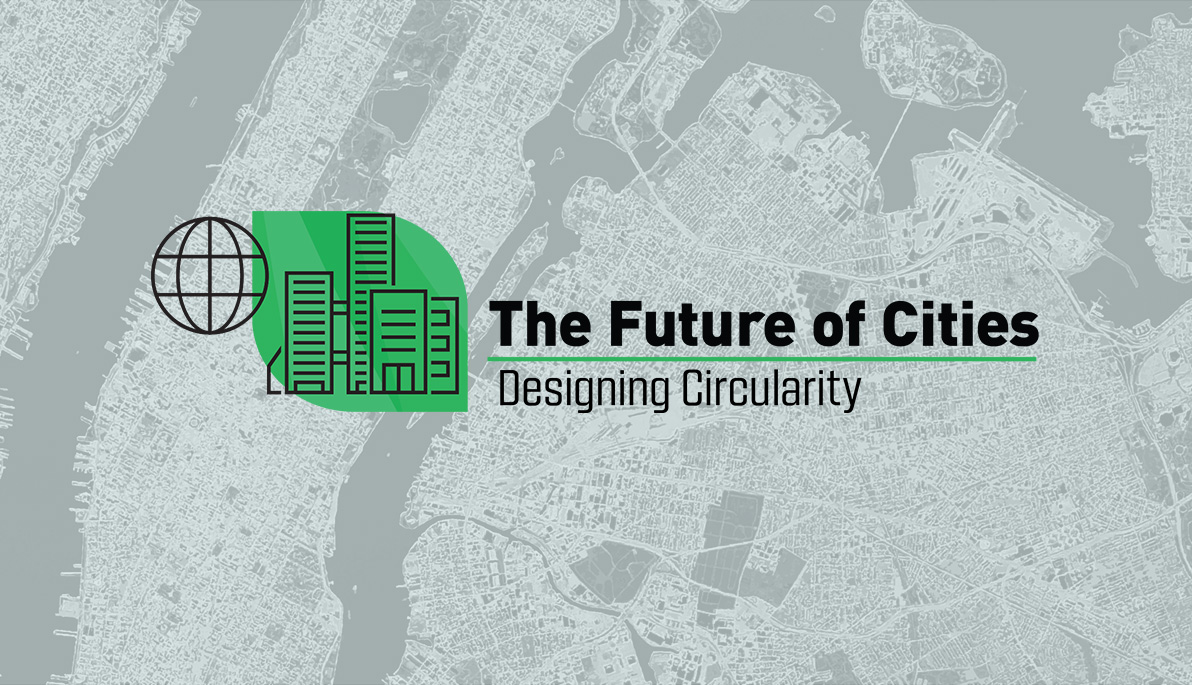News
School of Architecture and Design Co-hosts “Future of Cities”
June 4, 2021
On April 21, the School of Architecture and Design and the Consulate General of Denmark in New York partnered to host a virtual event addressing “The Future of Cities: Designing Circularity.” Christian Bason, chief executive officer of the Danish Design Center, and Kenneth A. Lewis, president of the American Institute of Architects New York (AIA) and managing partner at Skidmore, Owings & Merrill (SOM), participated in a productive, inspiring conversation about circular cities and sustainable design strategies, with a focus on the intersection between design and innovation in business models and architecture practice as well as the importance of citizen engagement when developing sustainable, livable cities.
“We are committed to providing a platform for ongoing conversations on actionable urban regeneration, sustainable best practices in architecture, design, and urban planning for climate change adaptation,” noted School of Architecture and Design Dean Maria Perbellini, M.Arch., in her opening remarks. “Reflecting on the purpose of education, schools today take on the mandate to tackle relevant questions on diverse representation, social justice, affordable housing and services for vulnerable populations in healthy, safe and sustainable built environments.”
In his presentation, Bason shared his perspective on design as an approach to systemic citizen engagement and business innovation and how it can contribute to transforming our cities to become green, thriving, and sustainable. He shared case studies from the work of the Danish Design Centre, a government-funded lab for design. Lewis spoke about how the past year, the pandemic, the climate crisis, and social inequality have clarified the design profession’s leading role in meaningful change. He referenced an initiative by Lewis called Reflection/Inflection, a guiding theme for the 163-year-old institution in 2021.
As moderator of the conversation between Bason and Lewis, architect and urban planner Jeannette Sordi, who serves as an adjunct faculty member of the School of Architecture and Design, provided this summary:
Christian Bason’s Danish Design Center is an “opportunity generator,” a hub that promotes the value of design for Danish business and industry by giving companies and organizations an opportunity to test how design practices can boost innovation and development. As Herbert Simon notably defined it, design means to devise “courses of action aimed at changing existing situations into preferred ones.” At this moment in time, as Bason highlighted in his presentation, there is an urgency to limit the use of nonrenewable resources and reduce, if not absorb, global carbon emissions. Today, 70 percent of global CO2 emissions are driven by people living in cities, and 45 percent of CO2 emissions are related to our use of materials. Design thinking and doing, through systemic citizen engagement and business innovation, can lead the way. Five principles are at the core of circular value creation at the Danish Design Center: to explore and map value flows; understand what drives current behaviors; create partnership (among cities, citizens, public and private enterprises); co-design new circular and open systems; navigate and lead the way to zero carbon footprint or net-negative solutions.
Meanwhile, Ken Lewis’s presentation showcased how architecture plays a crucial role in enabling a systemic change in our cities. Climate change affects about 2.5 billion people, and the built environment is critical in responding to this change. The global building stock is responsible for about 40 percent of global emissions, the largest impact among all industries, and is growing to 1.7 trillion square feet. In the past decade alone, his firm, SOM, has built 426 million square feet, presenting innovative solutions and protocols to address the environmental impact of buildings, neighborhoods, and cities. SOM is leading interconnected efforts that aim to reach zero greenhouse gas emissions, explore innovative materials and processes, and assign numerical values to the United Nations 2030 Sustainable Goals as performance-based objectives to be tracked over time. Addressing the climate crisis is also one of the main challenges for the American Institute of Architects. As Lewis stated in his presentation, 2020 represented a point of inflection in which many cataclysms—political, racial, environmental, health-related—require that we embrace a phase of reflection in which we devise strategies to transform our course of action and make both the profession of architecture and the built environment more sustainable, inclusive, safe, and equitable.
As cities keep expanding and urban lifestyles keep driving resource consumption and carbon emissions globally, it is fundamental that we imagine new ways of living together. Circular design, circular businesses, circular cities suggest a continual use of resources. Cities consume around three-quarters of global resources, but 44 percent of these resources are owned by the richest one percent. This disparity of access to wealth and opportunities is evident both at the global and local scales. Circular cities present a great opportunity to reduce the impact of urbanization on the world through a creative, innovative, inclusive, and shared use of resources. Bason and Lewis’ inspiring presentations showed how design and architecture can play a fundamental role in this transformation, representing and anticipating current and upcoming crisis, proposing and testing solutions, developing and implementing new models, protocols, and policies.
Berit Basse, ambassador for the Consul General of Denmark in New York, delivered closing remarks and encouraged attendees to engage in and follow developments around the world surrounding circular city initiatives that include and extend beyond design to policy, sustainability, science, and more.
See a video recap of the event here.




